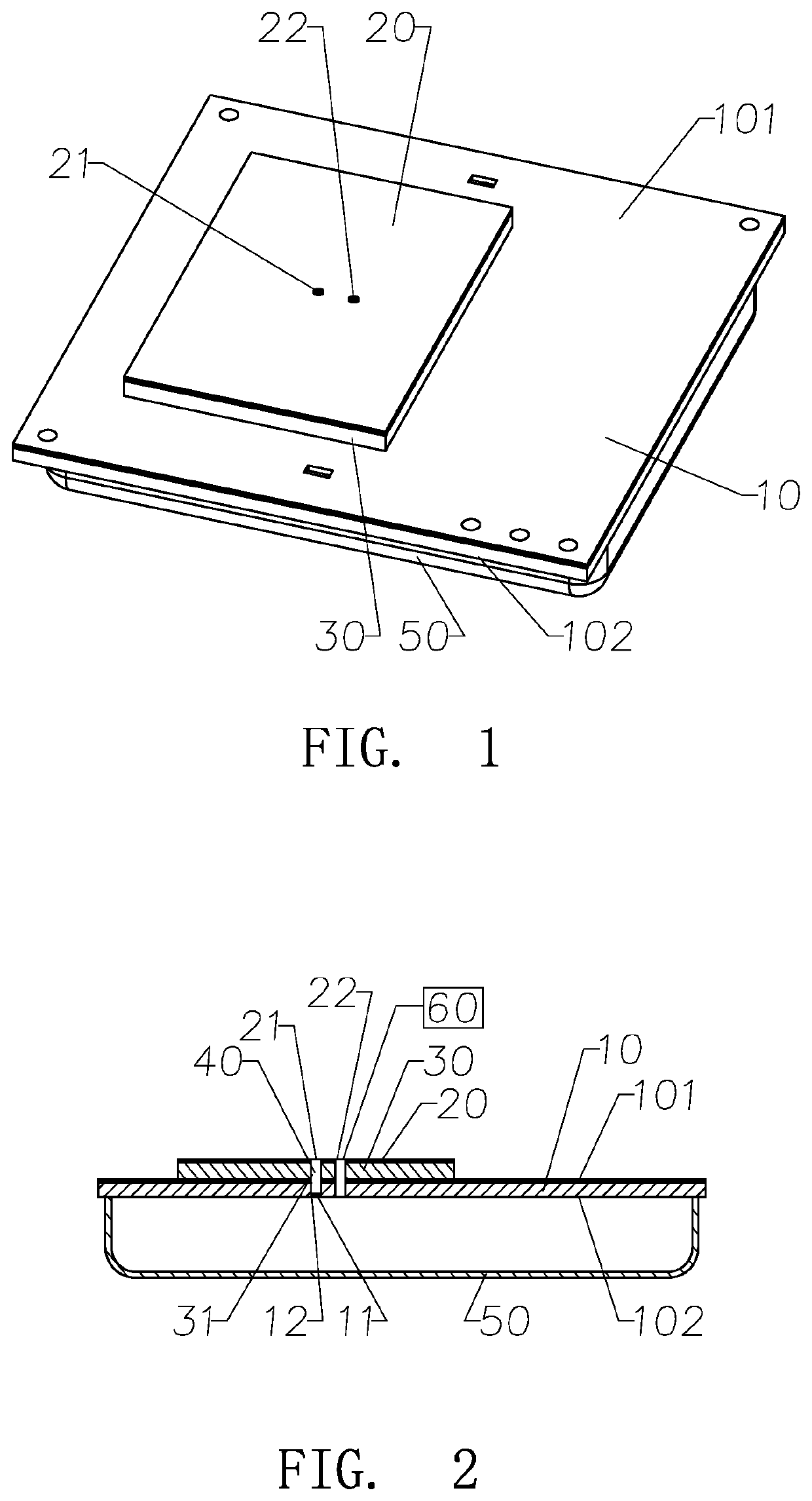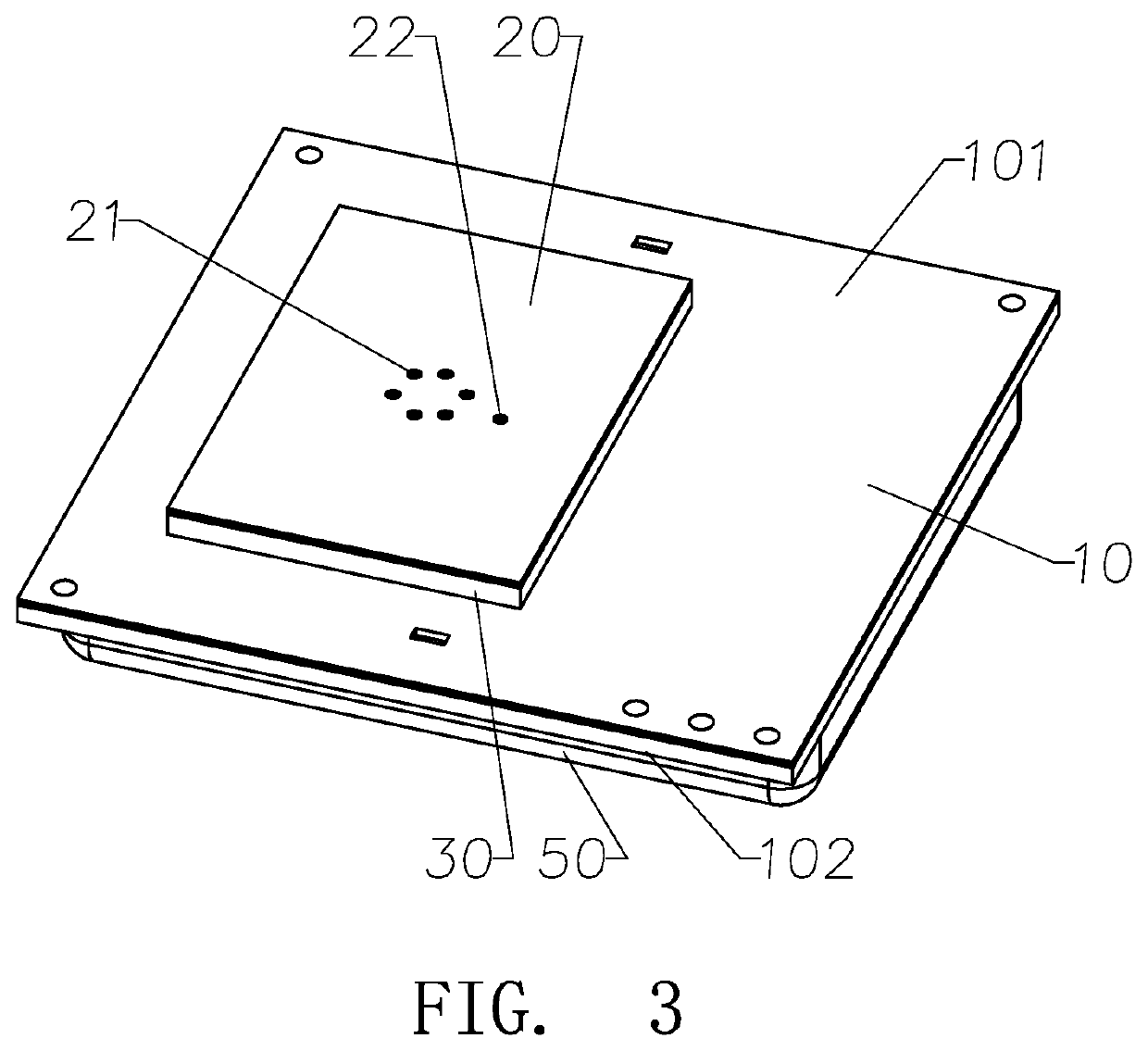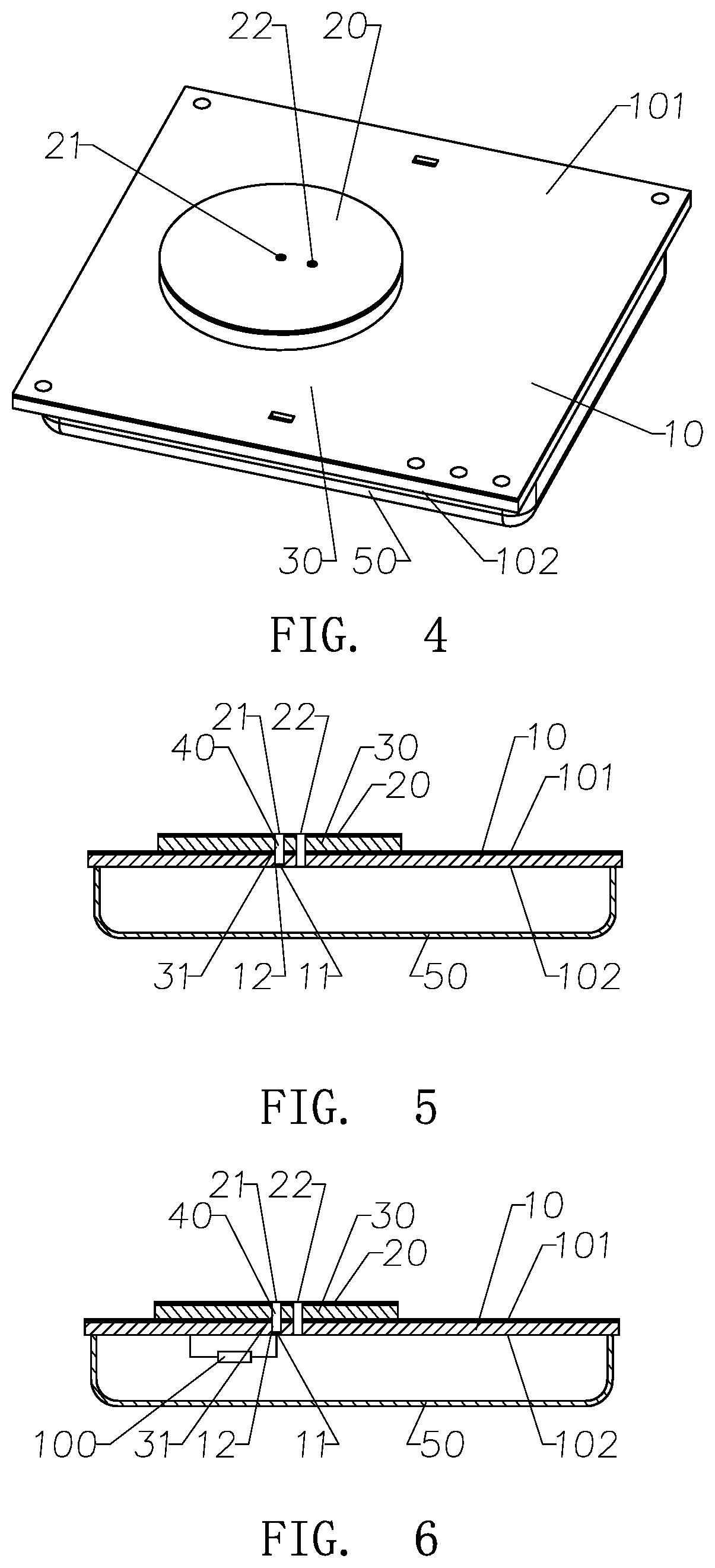Antenna with Anti-Interference Arrangement and Its Manufacturing Method
a technology of interference arrangement and antenna, applied in the field of antenna, can solve the problems of poor contact between the center point of the radiation source and the reference ground, affecting the signal output stability of the antenna, time-consuming, etc., and achieve the effect of narrowing the bandwidth of the antenna, lowering the impedance of the antenna, and lowering the antenna's impedan
- Summary
- Abstract
- Description
- Claims
- Application Information
AI Technical Summary
Benefits of technology
Problems solved by technology
Method used
Image
Examples
second embodiment
[0260]FIGS. 9 and 10 illustrate the present invention as an alternative mode thereof, wherein the antenna comprises a reference ground 10A, two radiating sources 20A, and an elongated connector 60A. The two radiating sources 20A are located adjacent to each other and are electrically connected by the elongated connector 60A. The elongated connector 60A is embodied as a micro-connection strip. A radiating clearance 30A is formed at each of the radiating sources 20A and the reference ground 10A.
[0261]Accordingly, the reference ground 10A has a first side 101A and an opposed second side 102A, wherein the radiating sources 20A are provided at the first side 101A of the reference ground 10A.
[0262]As shown in FIGS. 9 and 10, each of the radiating sources 20A has at least a radiating connection point 21A. The reference ground 10A has at least two reference ground connection points 11A. The radiating connection points 21A of the radiating sources 20A are electrically connected to the refere...
third embodiment
[0269]FIGS. 11 and 12 illustrate the present invention as another alternative mode thereof, wherein the antenna comprises a reference ground 10B, four radiating sources 20B, and three elongated connectors 60B. The reference ground 10B has a first side 101B and an opposed second side 102B. The four radiating sources 20B are formed in pair and are located adjacent to each other on the first side 101B of the reference ground 10B. The elongated connector 60A is embodied as a micro-connection strip. A radiating clearance 30B is formed at each of the radiating sources 20B and the reference ground 10A. The first elongated connectors 60B has two ends connecting to two adjacent radiating sources 20B in pair. The second elongated connector 60B has two ends connecting to two adjacent radiating sources 20B in another pair. The third elongated connector 60B has two ends connecting between the first and second elongated connectors 60B.
[0270]According to the preferred embodiment, the four radiatin...
fourth embodiment
[0281]FIGS. 13 and 14 illustrate the present invention as another alternative mode thereof, wherein the antenna comprises a reference ground 10C and at least a radiating source 20C. The radiating source 20C is disposed adjacent to the reference ground 10C to define a radiating clearance 30C between the radiating source 20C and the reference ground 10C. Accordingly, at least one radiating source 20C is electrically connected to the reference ground 10C.
[0282]In particular, the reference ground 10C has a first side 101C and an opposed second side 102C, wherein the radiating source 20C is disposed at the first side 101C of the radiating source 20C.
[0283]As shown in FIGS. 13 and 14, the radiating source 20C has one radiating connection point 21C and a feed point 22C, wherein the radiating connection point 21C is overlapped with the feed point 22C. The reference ground 10C has at least one reference ground connection point 11C. The antenna further comprises at least an electrical connect...
PUM
 Login to View More
Login to View More Abstract
Description
Claims
Application Information
 Login to View More
Login to View More - R&D
- Intellectual Property
- Life Sciences
- Materials
- Tech Scout
- Unparalleled Data Quality
- Higher Quality Content
- 60% Fewer Hallucinations
Browse by: Latest US Patents, China's latest patents, Technical Efficacy Thesaurus, Application Domain, Technology Topic, Popular Technical Reports.
© 2025 PatSnap. All rights reserved.Legal|Privacy policy|Modern Slavery Act Transparency Statement|Sitemap|About US| Contact US: help@patsnap.com



